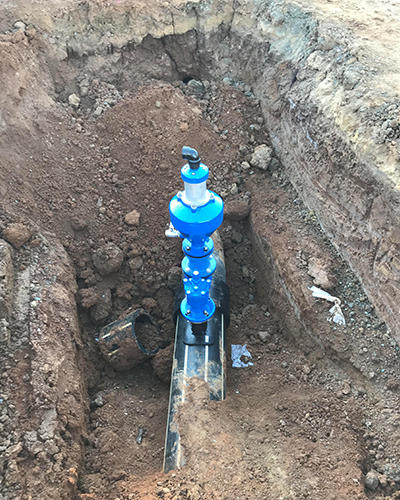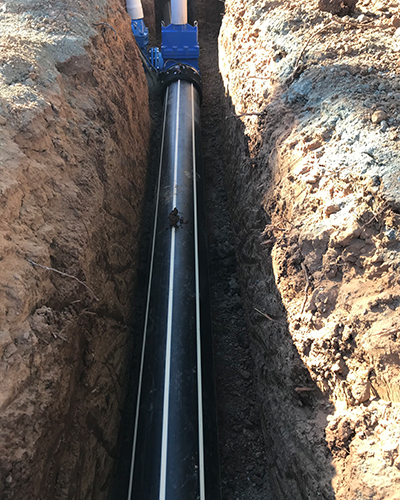The contract called for installation of one kilometre of polyethylene rising main leading to the pump station. Interflow’s alternative installation methodology of Horizontal Directional Drilling was accepted by Coliban Water.
Horizontal Directional Drilling minimised the need for excavation, requiring only launch and winch pits at spacings of about 120 metres rather than continuous trenching. As the planned works window coincided with winter and most of the pipeline route was within the open channel of the road, there were risks of the alignment becoming inundated. Minimising excavation was an obvious benefit.
Once the bungs were installed, the vac truck sucked out the manhole periodically, whilst the crew set A shutdown of operations at night was required while work was carried out at the pump station. Test shutdown was required to determine holding capacity of the system and a time limit was given to complete the shut down and reconnection. Internal pumping station pipework was installed or replaced, along with the valve system by Interflow crews.


Coliban Water required replacement of one kilometre of sewer main without interruption to the existing network. This required duplication of the main and carefully planned shutdown and connections to keep the network operating at all times.
Interflow was able to install the rising main by Horizontal Directional Drilling rather than dig-and-relay. This not only saved the client money, but reduced environment risk by minimising excavation in a sensitive area.
Sewer expertise with Confined Space Entry needed for precise pump shutdowns, bypass and cut-ins on live assets.
By proposing a trenchless alternative, Interflow delivered a more efficient pipeline installation solution compared to digging and laying. Applying the combined skills of Interflow’s civil crews along with those of a specialist sub-contractor for the directional drilling component of the sewage pumping station upgrade all under the one contract, meant more efficient project administration for Interflow.